My American National Identity
Church

This is a picture of St. Paul’s Episcopal Church in Richmond. I believe that the church represents the faith that has shaped America during its’ 244-year-long history. Almost all of the founding fathers had a Christian faith of some type and Christianity has remained the dominant religion in the US since then. Although the percentage of Americans that are Christian has declined throughout the late twentieth century, Christianity’s tenets of love and grace still impact America.
School

In America, all children are educated. Many of them attend American public schools. This promise of free, governmental education has attracted many immigrants to come to America where they know that their children have at least some chance to get ahead by doing well in school.
US Constitution

The US Constitution is the governing document for the United States. It has proved revolutionary in changing the world through its ideals of freedom, democracy, and small government. Before the foundation of the United States, there were few democratic societies in the world. Through America’s outreach, most countries today have a democratic system of government. In addition to the Constitution, the Bill of Rights guarantees a large number of privileges to the American people.
Freedom of Speech
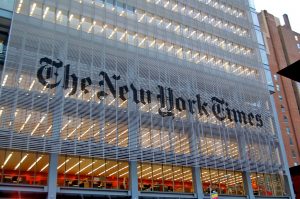
One of the most important freedoms in the Bill of Rights is the freedom of speech. This allows for criticism of the government and powerful people. Without the right to criticize those in power, a country will not have a very equitable and accountable society.
White House

The White House is the residence of the president of the United States and is instantly recognizable across the United States as a symbol for the president. In the US and worldwide, the president is seen as the representative for American policy and affairs.
The Army
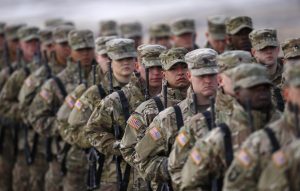
The US Army is an important emblem for America, especially in foreign enemy countries. The army has been around since the earliest days of America but became a permanent, longstanding force in the early twentieth century. America’s army greatly contributed to the victories of the Allies in the two world wars and even today America’s army is mostly seen as a force for good.
Statue of Liberty

The Statue of Liberty is a monument in New York Harbor that welcomed millions of immigrants into America when they came here during the first half of the twentieth century on trans-Atlantic ocean liners. Most immigrants from overseas now arrive by plane, but the Statue of Liberty still stands as a symbol of the American immigrant culture.
Grand Canyon

The National Park System in the United States is one of the great features of America as it showcases the natural wonders and historical sites of the country. One of these parks is Grand Canyon National Park, established in 1919. The Grand Canyon is not the deepest, widest, or even longest canyon, but is one of the few canyons that has all three of these qualities in abundance. The National Parks of America represent America as it was before humans arrived and remind us that some places must be kept from development.
Monument Avenue

Monument Avenue in Richmond is not indicative of my identity as an American, but my identity as a Virginian. I have lived in Virginia for most of my life and am proud of its longstanding history and natural beauty. Although Virginia has been tainted by the impacts of slavery, I think that Virginia has generally made a good footprint on the United States. Virginia was the first English settled colony and contributed a great number of leaders to the fight for independence and the foundation of the country. Monument Avenue, prior to 2020, housed six statues: three of Confederate generals, one of a Confederate admiral, one of Confederate President Jefferson Davis, and one of Richmond native and international tennis star, Arthur Ashe. The five statues of Confederate men, although flawed by their involvement with the wrong side of the Civil War, represent the heritage of many native Virginians.
The Plantation

The plantation is another point of Virginian identity. Again, it is tainted by slavery, but I think that it should still be remembered as a crucial place in Virginia history as most of the leaders of the state in the seventeenth, eighteenth, and nineteenth centuries were born and raised on plantations. Furthermore, many Black Virginians have ancestors who worked and lived on these plantations as well. As a relative newcomer to Virginia, I respect its past but recognize the need to put some clarification in the history books.
A Diverse Melting Pot

People of countless races, ethnicities, and cultures live in America. I believe this is one of the strengths of the US as when someone has exposure to multiple viewpoints, they can often make better decisions. Historically, people from across the world came to America to become part of something larger than themselves. This idea is exemplified in the national motto, E Pluribus Unum, which means “Out of many, One.”
The American Dream

One of the key reasons people come to the United States in the hundreds of thousands each year is the hope of achieving the American Dream. The American Dream is the idea that anyone can come to America and have a good life by working hard. I feel this personally as my parents are both first generation immigrants to the US from Canada. Although Canada is very similar to the US, they have less freedom and more taxes and big government. In America, someone can come and work hard and keep most of the money that they make. They can start a family and maybe start a business. Anyways, the freedom to do almost anything you set your mind to and work hard at can be found in America.
An Egyptian National Identity
Mosque
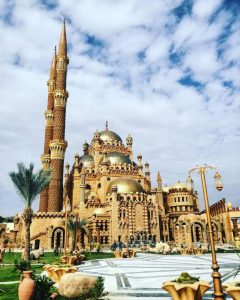
The Mosque is crucial to understanding Egypt as the country is around 90% Muslim and has been ruled by Muslim leaders since the seventh century. Islam influences Egypt in beneficial ways as one of the key tenets of the faith is to give alms to the poor and, in addition, Muslim banks do not charge interest and thus make it easier to get out of debt.
Nile River

The Nile River flows through the middle of Egypt and it is safe to say that without the Nile Egypt would not be a country or at least as historically significant as it was and is. The Nile is responsible for nearly every facet of Egyptian life, from water to food to items manufactured from river plants to transportation. Apart from the Nile, Egypt is largely a desert country, so the river is very important.
The Pyramids
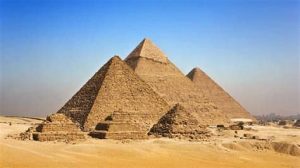
The Pyramids of Giza are simply amazing. They are probably the greatest tourist lure in Egypt and were part of the Seven Wonders of the Ancient World. Notably, they are the only site of the Seven Wonders that remain in a condition that somewhat resembles their original state. Built to house the pharaohs of Egypt’s earliest dynasties, the pyramids have stood for around 4500 years and are a symbol of Egypt as a whole.
The Pharaohs

Ancient Egypt was ruled by pharaohs for thousands of years. These kings left their imprint on the landscape of the modern-day country in their temples, palaces, and tombs scattered all over Egypt. During the time of the pharaohs, Egypt was fiercely independent and was also a great power that ruled over nearby lands as well.
Cairo

Cairo is the capital of Egypt and has been for one thousand years. Located on the Nile River in Lower Egypt, Cairo was established by the Fatimid dynasty. In the modern day, the city is the largest in Africa and the Middle East. It is called the “city of a thousand minarets” and is the home to over forty mosques. Cairo is not just the political but also the cultural and religious capital of Egypt.
Arabic language

Virtually every Egyptian speaks Arabic. The language was brought to Egypt by the Muslims when they conquered the country in the seventh century and spread through the land. Nowadays, the Ancient Egyptian language is kept alive solely in the Christian Coptic faith’s religious ceremonies.
Saladin
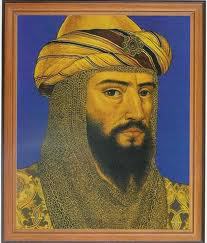
Saladin was the founder of the Ayyubid Dynasty that ruled Egypt in the twelfth and thirteen centuries. He is seen by many in the Middle East as the quintessential Muslim that fought against the Christians in the Crusades and almost completely annihilated the Christian state in Palestine. Saladin was responsible for many building projects in Egypt and most famously built the citadel of Cairo.
Flag of Egypt

This is the national flag of Egypt. It was adopted in 1984, although Egypt has had some variant of the red, white, and black tricolor since the foundation of the republic in 1953. The flag features the eagle of Saladin, which is also the national emblem of Egypt, in the middle. The colors of the flag also hold meaning: red stands for the Egyptians’ blood in the fight against their oppressors, white stands for the purity an Egyptian’s heart, and black stands for the defeat of darkness.
Government
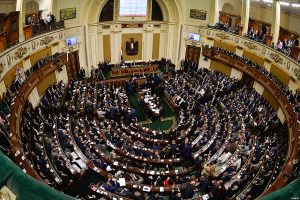
The Government of Egypt is relatively young compared to the older governments of Egypt which sometimes lasted for hundreds of years. The Republic of Egypt was founded after the revolution in 1952 against the king of Egypt. It consists of two primary branches: the presidency and the legislature. The president has more power than the legislature so that can sometimes be an issue, especially when a dictator rises to power.
School
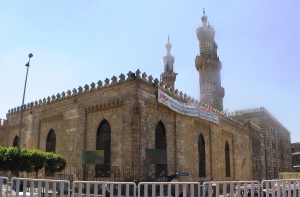
School in Egypt is free, except the education system does not have the resources to ensure a quality education for everyone. However, Egypt’s religious universities are world-renowned. Al-Azhar University, in particular, is widely regarded as the best university for Sunni Islamic teaching.
Music

Egyptian music is very influential in the larger Middle East region, just like the country as a whole. Initially, music was patronized by the khedives (rulers of Egypt during the late nineteenth century). This was the beginning of contemporary Egyptian music, as most artists in the twentieth century looked to those in the nineteenth for help and inspiration. Currently, Egypt hosts a thriving music scene of the contemporary, techno, folk, and classical genres.
Diversity of Cultures: Muslim, Christian, and Jewish

In Egypt, the main culture is Muslim but there are two additional minority cultures: Christian and Jewish. Under the current government, all groups are treated fairly and equally. Historically, this was not always the case. Under the early Muslim rulers, Christians and Jews had to pay supplementary taxes because they were not Muslim. However, this practice does not exist in Egypt anymore. Today, Egypt is as a united country where almost everybody speaks the same language and practices the same religion.